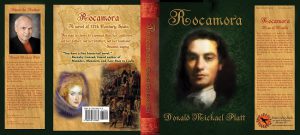For my series on the places that inspire authors, Joan Fallon tells us about Medinat al-Zahra, and why a ruin not far from the ancient city of Córdoba in southern Spain provided the foundations for a trilogy.
The al-Andalus trilogy and the story behind it
by Joan Fallon
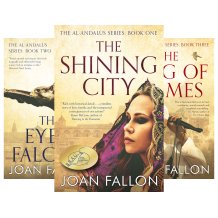
The al-Andalus trilogy is set in Córdoba and its surrounding countryside.
It is 10th century Spain, the Golden Age of Moorish rule, the time of the great caliphs, when Córdoba was considered the centre of cultural and learning for the western world.
For many years I have been fascinated by this beautiful city and when I heard about the ruins of Madinat al-Zahra which were only just outside its boundaries, I knew I had to go to visit them. This was the city of al-Rahman III, the greatest of all the caliphs and more than that, I was intrigued by the idea that a palace-city of such magnificence should have lasted for such a short time. Civilisations come and go, as any reader of history knows, but for it to last no more than 75 years seemed a tragedy.
 It was the summer of 2001. I picked up a leaflet about an exhibition that was to be held in the museum at Madinat al-Zahra. It was entitled The Splendour of the Cordovan Umayyads. So we drove across from Málaga, on a blistering hot day to see what it was all about.
It was the summer of 2001. I picked up a leaflet about an exhibition that was to be held in the museum at Madinat al-Zahra. It was entitled The Splendour of the Cordovan Umayyads. So we drove across from Málaga, on a blistering hot day to see what it was all about.
I have been back many times since and the place holds a fascination for me; so much so that it inspired me to write a novel. I decided to tell the story of the city through a family that lived there; I had the bare bones of my novel before me, in the stone walls and paved paths, in the narrow passages ways, the ornate gardens, the artefacts in the museum. All I needed to do was to make the city come alive through my characters. I called the novel The Shining City because ‘Madinat’ (or medina) is the word for town and ‘Zahra’ means shining or brilliant. It’s said that the caliph called the city al-Zahra because, at the time it was being built, he was in love with a slave girl called Zahra. It could be true; there are certainly written references to a concubine of that name, but personally I think ‘Zahra’ referred to the magnificence of the city itself. As the principle character in my book, Omar, tells his nephew:
‘It means shining, glistening, brilliant. Possibly his concubine glittered and shone with all the jewels and beautiful silks he showered upon her but then so did the city. It was indeed the Shining City. When visitors entered through the Grand Portico, passing beneath its enormous, red and white arches, when they climbed the ramped streets that were paved with blocks of dark mountain stone, passing the lines of uniformed guards in their scarlet jackets and the richly robed civil servants that flanked their way, when they reached the royal residence and saw the golden inlay on the ceilings, the marble pillars, the richly woven rugs scattered across the floors and the brilliant silk tapestries, when they saw the moving tank of mercury in the great reception pavilion that caught the sunlight and dazzled all who beheld it, then they indeed knew that they were in the Shining City.’
Of course today, looking at the ruined paths, the piles of broken tiles, the reconstructed arches and pillars, we need to use our imagination to see it as it once was.
The construction of the city of Madinat al-Zahra was begun in the year 939 AD by Abd al-Rahman III and took forty years to complete. Having declared himself the caliph of al-Andalus in 929 AD and with the country more or less at peace he wanted to follow in the tradition of previous caliphs in the East and build himself a palace-city, grander than anything that had been built before. The site he chose was eight kilometres to the west of Córdoba, in present day Andalusia, and measured one and a half kilometres by almost a kilometre. It was sheltered from the north winds by the mountains behind it and had an excellent vantage point from which to see who was approaching the city. It was well supplied with water from an old Roman aqueduct and surrounded by rich farming land. It had good roads to communicate with Córdoba and there was even a stone quarry close by.
The caliph left much of the responsibility for the construction of the city to his son al-Hakam, who continued work on it after his father’s death.
One of the most curious questions about Madinat al-Zahra is why, despite its importance as the capital of the Omeyyad dynasty in al-Andalus, this magnificent city endured no more than seventy-five years. When al-Hakam died in 976 AD the city was thriving; all the most important people in the land lived there. The army, the Mint, the law courts, the government and the caliph were there; the city boasted public baths, universities, libraries, workshops and ceremonial reception halls to receive the caliph’s visitors. But al-Hakam’s heir was a boy of eleven-years old. The new boy-caliph was too young to rule, so a regent was appointed, the Prime Minister, al-Mansur, an ambitious and ruthless man. Gradually the Prime Minister moved the whole court, the Mint, the army and all the administrative functions back to Córdoba, leaving the new caliph in Madinat al-Zahra, ruling over an empty shell.
 Once the seat of power had been removed from Madinat al-Zahra, the city went into decline. The wealthy citizens left, quickly followed by the artisans, builders, merchants and local businessmen. Its beautiful buildings were looted and stripped of their treasures and the buildings were destroyed to provide materials for other uses. Today you can find artefacts from the city in Málaga, Granada, and elsewhere.
Once the seat of power had been removed from Madinat al-Zahra, the city went into decline. The wealthy citizens left, quickly followed by the artisans, builders, merchants and local businessmen. Its beautiful buildings were looted and stripped of their treasures and the buildings were destroyed to provide materials for other uses. Today you can find artefacts from the city in Málaga, Granada, and elsewhere.
Marble pillars that once graced the caliph’s palace now support the roofs of houses in Córdoba. Ashlars that were part of the city’s walls have been used to build cow sheds.
Excavation of the site of Madinat al-Zahra began in 1911 by Riocardo Velázquez Bosco, the curator of the mosque in Córdoba. The work was slow and hampered by the fact that the ruins were on private property. Landowners were not keen to co-operate and eventually the State had to purchase the land before the excavations could begin. The work progressed slowly but gradually over the years a number of government acts were passed which resulted in the site being designated as an Asset of Cultural Interest and in 1998 a Special Protection Plan was drawn up to give full weight to the importance of the ruins. Today the site is open to the public and has an excellent visitor centre and museum.
THE SHINING CITY became the first book in a trilogy about al-Andalus and 10th century Spain in particular. I decided to write a second book about the boy-caliph, al-Hisham II whose life was dominated by his mother and her lover. This one I entitled THE EYE OF THE FALCON.
After some hesitation—I was unsure if I would find enough material for a third book—I wrote the third book in the series, THE RING OF FLAMES. This brings the story up to the end of the Golden Age and the demise of the Omayyad dynasty, and gives some clue to the eventual fate of al-Hisham II, the forgotten caliph.
The trilogy is available in paperback and on Kindle.
For more information see: www.joanfallon.co.uk

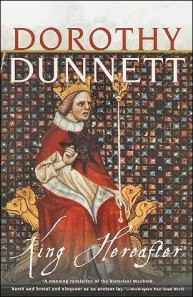 There are two sets of Dorothy Dunnett’s two historical novel series on my bookshelves, plus two copies of King Hereafter: a few are hardbacks the rest are now dry, cracked-spine paperbacks, whose pages are so yellow and print so small that I struggle to read them – but I still do. I’ve bought a few replacements over the past forty years, but somehow can’t bring myself to throw or even give away the originals. The other curious thing about these old books is something very modern. Without strapping any box to my head or standing in any man-made cubicle wearing black goggles they produce a form of virtual reality. Just by looking at a title I can see scenes. Stills and moving images hang in the air: a joyous youth riding an ostrich, the same man now older rides a silken-hide camel; a little boy with sturdy legs runs through apricots drying on a rooftop; a vast eagle swoops across a snowy waste onto an arm; a mad, brave youth runs across moving oars and marries a woman with ‘spawn-like’ eyes . . .
There are two sets of Dorothy Dunnett’s two historical novel series on my bookshelves, plus two copies of King Hereafter: a few are hardbacks the rest are now dry, cracked-spine paperbacks, whose pages are so yellow and print so small that I struggle to read them – but I still do. I’ve bought a few replacements over the past forty years, but somehow can’t bring myself to throw or even give away the originals. The other curious thing about these old books is something very modern. Without strapping any box to my head or standing in any man-made cubicle wearing black goggles they produce a form of virtual reality. Just by looking at a title I can see scenes. Stills and moving images hang in the air: a joyous youth riding an ostrich, the same man now older rides a silken-hide camel; a little boy with sturdy legs runs through apricots drying on a rooftop; a vast eagle swoops across a snowy waste onto an arm; a mad, brave youth runs across moving oars and marries a woman with ‘spawn-like’ eyes . . .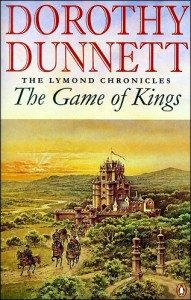 If you recognise any of these scenes you probably qualify as a Dorothy Dunnett fan, and are very likely a ‘historical fiction junkie’. That’s what I was told Dunnett fans were a few years ago. There are currently three Facebook groups for Dunnett fans that I know of. I dip in now and again and am always rewarded by some insight into a bit of history or details on one of the many locations. The news on one today is from a student in Australia who is writing her MA dissertation on Dunnett.
If you recognise any of these scenes you probably qualify as a Dorothy Dunnett fan, and are very likely a ‘historical fiction junkie’. That’s what I was told Dunnett fans were a few years ago. There are currently three Facebook groups for Dunnett fans that I know of. I dip in now and again and am always rewarded by some insight into a bit of history or details on one of the many locations. The news on one today is from a student in Australia who is writing her MA dissertation on Dunnett.
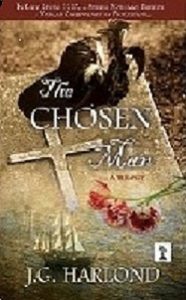
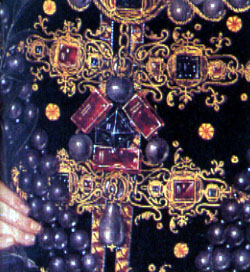

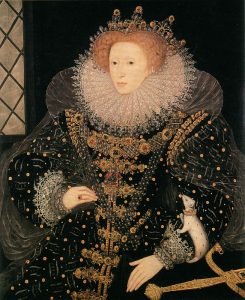 On Edward’s death, the magnificent Three Brethren passed into the hands of his elder sister Mary, then became a favourite jewel of Elizabeth I. It features in several of her portraits including the famous ‘ermine portrait’. Subsequent portraits of James 1st of England, VI of Scotland show him wearing the Three Brethren as well.
On Edward’s death, the magnificent Three Brethren passed into the hands of his elder sister Mary, then became a favourite jewel of Elizabeth I. It features in several of her portraits including the famous ‘ermine portrait’. Subsequent portraits of James 1st of England, VI of Scotland show him wearing the Three Brethren as well.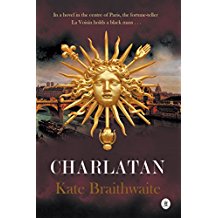
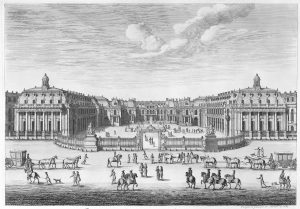
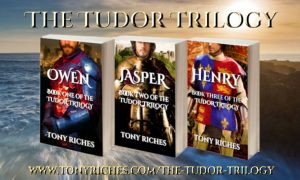
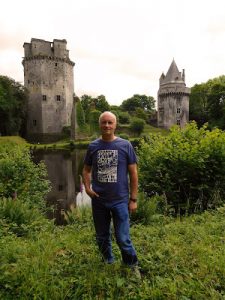
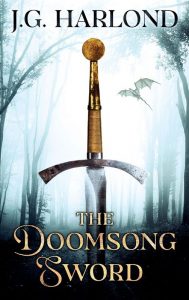
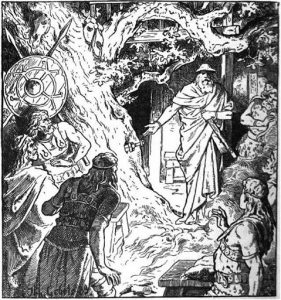 I can’t say all this consciously inspired me to re-write The Doomsong Sword as a novel, but I was motivated in part by the desire to create a meaningful story out of an old tale for a new generation – my newborn grandson in particular. Davor, the reluctant hero in the story, is an ordinary boy in an extra-ordinary situation: he is lazy and dreams up wild stories to get out of doing his chores. But then he begins to live one, and it is a story more fantastical than he has ever concocted. He not only has to survive alone in the cold Dark Age North with only a wolf-cub for company, but confront all manner of dreadful and frankly outrageous situations, such as finding himself in the home of a three-headed troll and evading the vicious Dwarf, Andvari, under a waterfall. The sword in the title is named ‘Anger, Doomsong and Truth-teller’ in the saga and I had huge fun writing this into my story, although the manuscript went through many, many drafts before it felt right. Weaving bits of Norse mythology into the basic Sigurd, the Dragonslayer legend to create something new – a coming-of-age story that has meaning for a 21st century reader – was not easy. Nevertheless, as soon as I’ve finished the third book in my wily Ludo da Portovenere (17th century) trilogy I’ll be back in the old, cold North to write the ‘Doomsong’ sequel.
I can’t say all this consciously inspired me to re-write The Doomsong Sword as a novel, but I was motivated in part by the desire to create a meaningful story out of an old tale for a new generation – my newborn grandson in particular. Davor, the reluctant hero in the story, is an ordinary boy in an extra-ordinary situation: he is lazy and dreams up wild stories to get out of doing his chores. But then he begins to live one, and it is a story more fantastical than he has ever concocted. He not only has to survive alone in the cold Dark Age North with only a wolf-cub for company, but confront all manner of dreadful and frankly outrageous situations, such as finding himself in the home of a three-headed troll and evading the vicious Dwarf, Andvari, under a waterfall. The sword in the title is named ‘Anger, Doomsong and Truth-teller’ in the saga and I had huge fun writing this into my story, although the manuscript went through many, many drafts before it felt right. Weaving bits of Norse mythology into the basic Sigurd, the Dragonslayer legend to create something new – a coming-of-age story that has meaning for a 21st century reader – was not easy. Nevertheless, as soon as I’ve finished the third book in my wily Ludo da Portovenere (17th century) trilogy I’ll be back in the old, cold North to write the ‘Doomsong’ sequel. Ruth Downie was impelled to write after a visit to Hadrian’s Wall. What inspired her, though, was what was not there: tombstones for the women who lived with and worked for the occupying Romans.
Ruth Downie was impelled to write after a visit to Hadrian’s Wall. What inspired her, though, was what was not there: tombstones for the women who lived with and worked for the occupying Romans.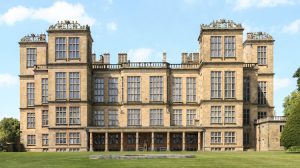 Elizabeth Freemantle tells of her visit to the Elizabethan house Hardwicke Hall in Derbyshire, which inspired The Girl in the Glass Tower: ‘The place is perched on a hill surveying the surrounding countryside and in my mind it became a glorious prison (for the tragic royal girl, Arbella Stuart)’. Had she visited on another day would the way the daylight lit the walls or her inner feelings have resulted in a quite different novel?
Elizabeth Freemantle tells of her visit to the Elizabethan house Hardwicke Hall in Derbyshire, which inspired The Girl in the Glass Tower: ‘The place is perched on a hill surveying the surrounding countryside and in my mind it became a glorious prison (for the tragic royal girl, Arbella Stuart)’. Had she visited on another day would the way the daylight lit the walls or her inner feelings have resulted in a quite different novel?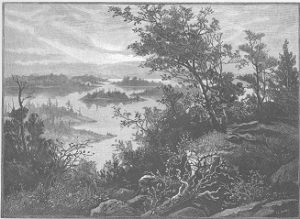 Janet Kellough’s books about the saddlebag preacher Thaddeus Lewis set in nineteenth century Upper Canada (now Ontario) involved exploring the regions he covered, the northern shores of the Great Lakes, even the backcountry.
Janet Kellough’s books about the saddlebag preacher Thaddeus Lewis set in nineteenth century Upper Canada (now Ontario) involved exploring the regions he covered, the northern shores of the Great Lakes, even the backcountry.